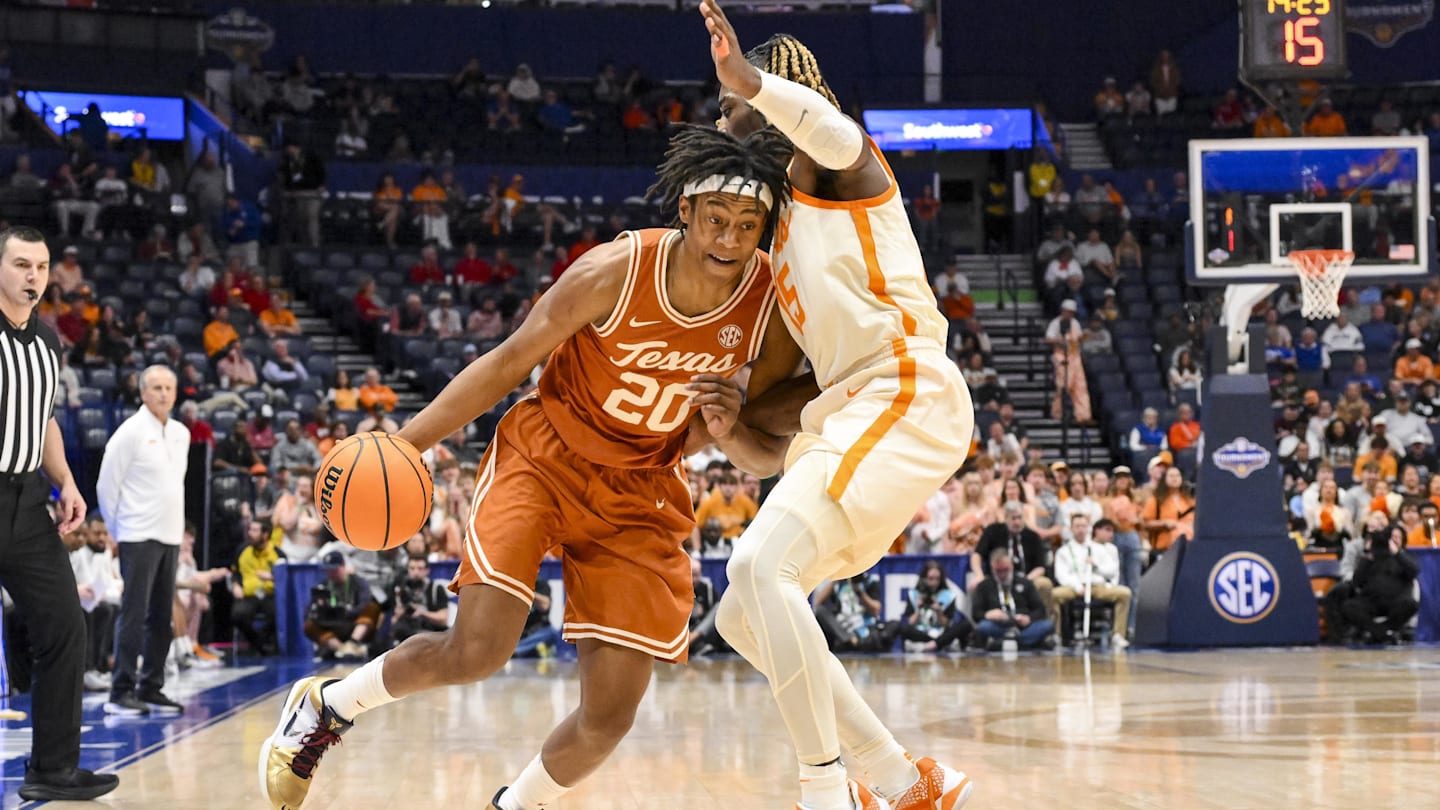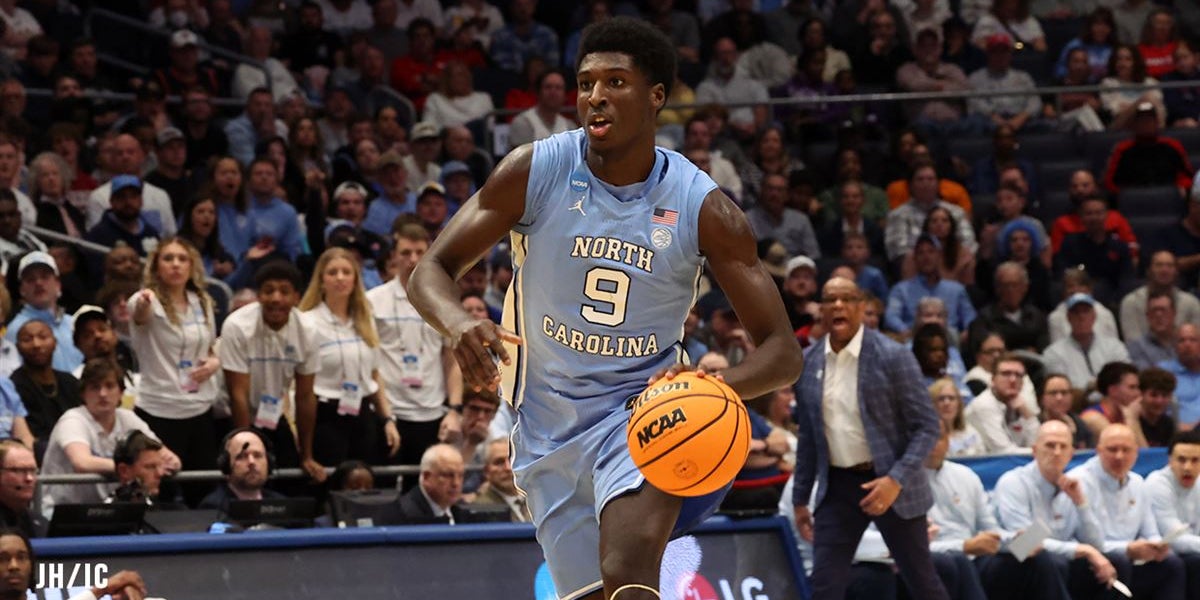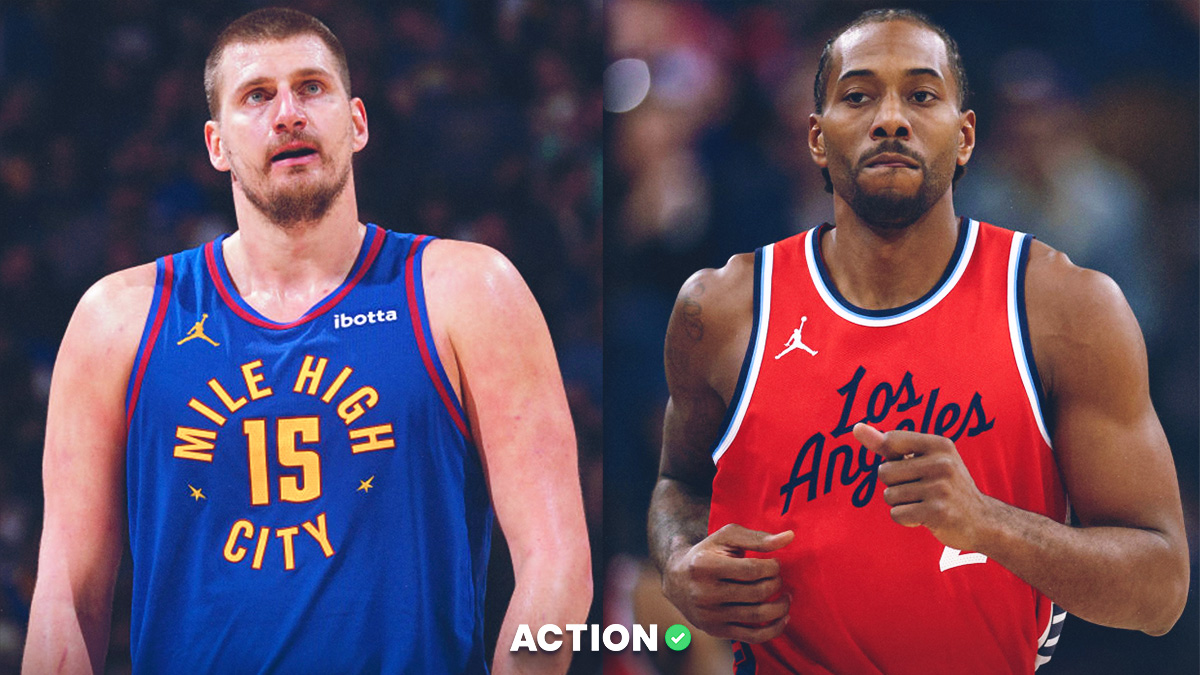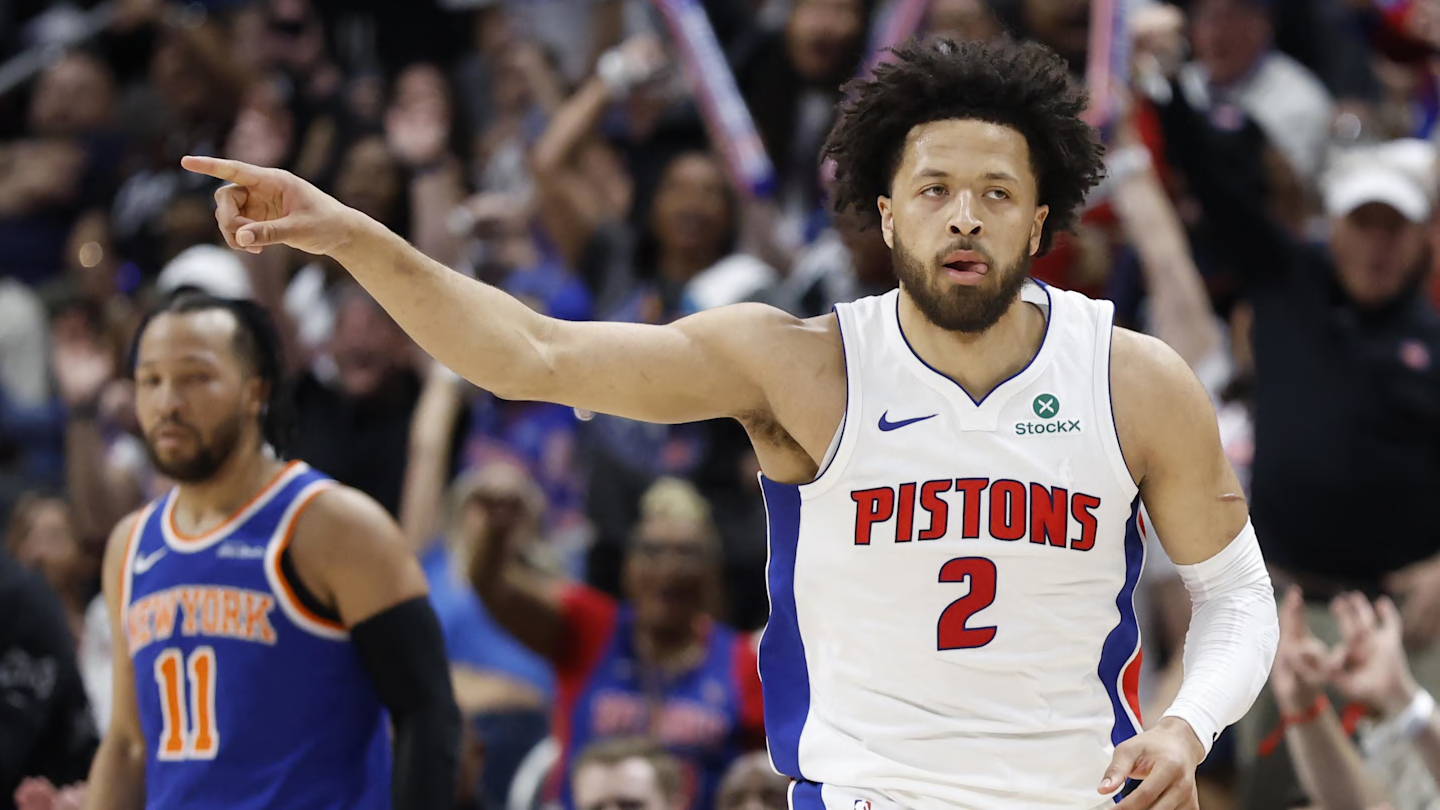
The new era of the NBA has seemingly emphasized both outside shooting and positional size. Most competitive teams are now filled with taller wings or forwards who can space the floor and guard multiple positions defensively. The NBA’s movement towards taller players with long wingspans has also led to the decline of undersized guards sticking in the NBA.
While we’ve dove into three queries that emphasize different levels of production based on college year, as shown through the Productive Young Athlete (PYA) query, Productive Sophomore Query (PSQ), and Productive Junior Query (PJQ), the Efficient Tall Freshman (ETF) Query dives into the combination of size and potential as a shooter in predicting NBA outcomes. The title itself is also a play on exchange-traded funds, which are also known as ETFs in the financial world and are one of the most common ways for people to invest their money. Similarly, perhaps the ETF query can be a reason for a team to invest in a prospect who meets the necessary criteria.
Before we dive into the statistical analysis, it’s important to define what “stick” means in my study. In this case, I considered a prospect to “stick” if they played at least five seasons in the NBA. Prospects who qualified during the 2020-21 NCAA season met the criteria of “sticking” if they are still in the league, due to the impossibility of them reaching five NBA seasons.
There were 60 freshmen throughout the 12 college basketball seasons from 2010-2021 who played at least 40% of their team’s minutes, were at least 6-foot-6, had a free throw percentage of at least 75%, had at least 50 free throw attempts, had a Box Plus-Minus of at least +3, and met the minimum athletic threshold of four total dunks. 68.33% (41/60) of those freshmen played five-plus years in the NBA or are currently in the NBA.
Why are each of these criteria important?
A freshman is the first year of a player at a college or university, indicating a young age of around 18 years old. Minutes Percentage is the share of the team’s total minutes that a prospect plays in. These two criteria alone help narrow prospects down into college basketball players who are young but are already trusted by their college coach and talented enough to play significant (defined here as ≥40% of the team’s total) minutes.
The next indicator for the prospect is having a free throw percentage of at least 75%, which indicates potential as a shooter at the next level. In fact, a player’s college free throw percentage is actually a better indicator of potential as an NBA shooter than their college three-point percentage. Additionally, all prospects included in the study shot at least 50 free throw attempts in their freshman season, reducing the chance for error within the free throw shooting indicator.
Since size and, more specifically, height is becoming more important to sticking in the NBA, we looked at players who are at least 6-foot-6. This narrows it down to freshmen being trusted to play a significant amount of their team’s minutes, have potential as a shooter in the NBA, and have significant size at 6-foot-6. Finally, one of the last two indicators is a Box Plus-Minus of at least +3, used to ensure that the prospects are impacting the college game to a baseline level over a replacement player. The last indicator is a minimum dunk threshold of four, used to incorporate a baseline athleticism metric.
Therefore, players who meet the Efficient Tall Freshman (ETF) query are freshmen who are trusted to play at least 40% of their team’s minutes, are impacting the game at a minimum level (+3 Box Plus-Minus), have positional size of at least 6-foot-6, have positive shooting indicators (converting at least 75% from the line on at least 50 attempts that season), and also meet the four-dunk athletic threshold.
Below are the players who met the Efficient Tall Shooter query from 2010-2021 and ended up “sticking” in the NBA:
2010: Alec Burks
2011: Tobias Harris, Harrison Barnes, and Allen Crabbe
2012: Cody Zeller
2013: Justin Anderson and Nik Stauskas
2014: Andrew Wiggins
2015: Karl-Anthony Towns, Myles Turner, Devin Booker, and Pascal Siakam
2016: Mikal Bridges
2017: Jayson Tatum, Lauri Markkanen, Jonathan Isaac, and Amir Coffey
2018: Shai Gilgeous-Alexander, Jaren Jackson Jr., De’Andre Hunter, Jalen McDaniels, Gary Trent Jr., Naji Marshall, Kevin Knox, and Oshae Brissett
2019: Cam Reddish, Nassir Little, and Charles Bassey
2020: Franz Wagner, Patrick Williams, Jaime Jaquez Jr., Zeke Nnaji, Isaiah Stewart, Josh Green, Jeremiah Robinson-Earl, Julian Champagnie, and Justin Champagnie
2021: Cade Cunningham, Keegan Murray, Benndict Mathurin, and Moses Moody
*Terrance Shannon Jr (2020) and Zach Freemantle (2020) both met the criteria but were not included in the study due to uncertainty regarding their NBA futures (such as being drafted in 2024 or being draft eligible in 2025)
2022
Three players met the criteria in 2022: Jabari Smith, AJ Griffin, and Tucker DeVries.
Jabari Smith was the third overall pick in the 2022 NBA Draft and has been an important part of the Rockets’ resurgence. The 6-foot-11 forward has averaged 31.1 minutes per game in his first three seasons and has appeared in 212 games for the Rockets. He‘s averaging 12.2 points, seven rebounds, 0.7 blocks, and 0.4 steals while shooting 35.4% from three on 4.9 attempts per game this season.
AJ Griffin was drafted with the 16th pick by the Atlanta Hawks in the 2022 NBA Draft. Coming into the NBA, Griffin had a significant injury history that appears to have unfortunately impacted his first two years in the NBA thus far as well. After appearing in 72 games for the Hawks in his rookie season while averaging 19.5 minutes per game and shooting 39% from deep on 3.6 attempts per game, injuries limited Griffin to only 20 games in his sophomore season with the Hawks. Prior to this season, AJ Griffin announced his retirement from basketball to pursue becoming a full-time minister — according to his YouTube.
Tucker DeVries played his first three seasons with the Drake Bulldogs before he and his father both took their talents to West Virginia this past season, with his father Darian DeVries becoming Head Coach at West Virginia last season after having the same role at Drake.
Darian DeVries will now be the Head Coach of Indiana after this upcoming season, where Tucker will also follow him. The 6-foot-7 guard averaged 14.9 points, 2.8 assists, 4.9 rebounds, 1.8 steals, and 1.5 blocks per game while shooting 47.3% from beyond the arc on nearly seven attempts per game. He’s a legitimate prospect in the 2026 NBA Draft.
2023
Nine players met the criteria in 2023: Brandon Miller, Brice Sensabaugh, Taylor Hendricks, Gradey Dick, Kyle Filipowski, Julian Phillips, Jett Howard, Mark Mitchell, and Andrew Rohde.
Miller, Sansabaugh, Hendricks, and Dick, and Howard were all first-round picks in the 2023 NBA Draft while Phillips was selected in the second round.
Kyle Filipowski appeared in 72 games this season for the Jazz, averaging 9.6 points, 6.1 rebounds, 1.9 assists, and 0.7 steals in 21.1 minutes per game.
Read More: Kyle Filipowski Offensive Scouting Report
Read More: Kyle Filipowski Defensive Scouting Report
Both Mark Mitchell and Andrew Rohde have been impactful at the college level. Mitchell played this past season at Missouri after two seasons at Duke while Rohde just finished his second season at Virginia after spending his freshman year at St. Thomas.
2024
Three players qualified for the Efficient Tall Freshman query in 2024: Stephon Castle, Johnny Furphy, and Kwame Evans Jr.
Castle, a finalist to win NBA Rookie of the Year appeared in 81 games for the Spurs this past season after being selected with the fourth overall pick in the 2024 NBA Draft. He was impactful on the defensive end of the floor while also averaging 14.7 points, 4.1 assists, 37 rebounds, and 1.2 stocks in 26.7 minutes per game.
Jonny Furphy was selected with the 35th overall pick in the 2024 NBA Draft and has appeared in 50 games for the Indiana Pacers this season — playing 379 total minutes.
Kwame Evans Jr was a 6-foot-9 sophomore at Oregon this past season who averaged 6.1 points, 4.6 rebounds, 0.7 assists, 0.4 steals, and 0.6 blocks per game. He’s shown some versatility defensively as well as potential as a long-term shooter, indicated by his 79.5 FT% and unguarded catch-and-shoot numbers last season. However, this season, Evans Jr only converted 72.3% of his free throws (94 attempts) and his minutes went from 22.5 minutes per game last season to 16.3 minutes per game this season. With increased minutes next season, Evans Jr will find his way back into the 2026 NBA Draft conversation.
Eight players met the criteria for the Efficient Tall Freshman (ETF) Query in 2025.
Cooper Flagg, Duke
The freshman phenom and Wooden Award winner, who also met the Productive Young Athlete query (76% stick rate) this past season, averaged 19.2 points, 7.5 rebounds, 4.2 assists, 1.4 steals, and 1.4 blocks per game while shooting 60.5% at the rim (210 attempts), 39.5% on on-rim twos (152 attempts), 38.5% from three (135 attempts), and 84% from the free throw line (213 attempts). Additionally, Flagg recorded a 21.2 defensive rebound percentage, 26.8 assist percentage, and 7.7 stock percentage. Flagg is the consensus projected No. 1 overall pick in June and deservedly so.
For those who haven’t seen much of his film from Montverde: 2025 NBA Draft: Cooper Flagg Preseason Scouting Report
Khaman Maluach, Duke
Another prospect who met both the Productive Young Athlete (PYA) query and the Efficient Tall Freshman (ETF) Query, Maluach was a 7-foot-2 freshman who averaged 8.6 points, 6.6 rebounds, 0.5 assists, and 1.5 stocks per game while shooting 76.9% at the rim (156 attempts) and 76.6% from the free throw line (77 attempts). The projected first round pick also recorded a 16.5 offensive rebound percentage and a 6.8 block percentage.
Dylan Harper, Rutgers
The third player who met both the Productive Young Athlete (PYA) query and the Efficient Tall Freshman (ETF) Query is the projected second overall pick: Dylan Harper. The 6-foot-6 freshman primary ball-handler averaged 19.4 points, four assists, 4.6 rebounds, 1.4 steals, and 0.6 blocks while shooting 70% at the rim (170 attempts), 30.9% of his non-rim twos (81 attempts), 33.3% of his threes (150 attempts), and 75% of his free throws (168 attempts). He also recorded a 27.1 assist percentage and 4.5 stock percentage this past season.
Derik Queen, Maryland
Queen was a 6-foot-10 freshman big for the Terps whoaveraged 16.5 points, nine rebounds, 1.9 assists, 1.1 steals, and 1.1 blocks per game while shooting 67.5% at the rim (231 attempts), 35.3% on non-rim twos (133 attempts), only 20% from beyond the arc (35 attempts), but a solid 76.6% from the free throw line (218 attempts). Additionally, the former Montverde player recorded a 9.0 offensive rebound percentage, 24.6 defensive rebound percentage, 11.6 assist percentage, and 5.8 stock percentage. The projected lottery pick also met both the Productive Young Athlete (PYA) query and Efficient Tall Freshman (ETF) query — similar to Flagg, Maluach, and Harper.
Tre Johnson, Texas
The 6-foot-6 freshman guard averaged 19.9 points, 2.7 assists, 3.1 rebounds, 0.9 steals, and 0.3 blocks per game while shooting 59.8% at the rim (97 attempts), 37.7% on non-rim twos (204 attempts), 39.7% from three (224 attempts), and 87.1% from the free throw line (139 attempts). Johnson is also a projected lottery pick.
Isaac Celiscar, Yale
The first player on this list who’s not a projected lottery pick in the 2025 NBA Draft, Celiscar is undoubtedly someone to monitor throughout his college basketball career. The 6-foot-6, 210-pound guard averaged 7.1 points, 1.5 assists, five rebounds, and 0.7 stocks in 20.7 minutes per game while converting 66.3% of his attempts at the rim (86 attempts), 38.2% of his non-rim twos (34 attempts), only 26.9% of his threes, but 76.6% of his free throws (64 attempts). He also recorded a 10.7 offensive rebound percentage this past season.
Karter Knox, Arkansas
The 6-foot-6, 220-pound wing averaged 8.3 points, 3.3 rebounds, one assist, and 1.1 stocks in 24 minutes per game while shooting 75.7% at the rim (70 attempts), 21.2% on non-rim twos (38 attempts), 35% from three (100 attempts), and an impressive 80.2% from the free throw line (91 attempts).
Jacob Cofie, Virginia
The 6-foot-10, 232-pound forward averaged 7.2 points, 4.6 rebounds, one assist, 1.1 steals, and 0.8 blocks in 20.8 minutes per game. He shot 63.5% at the rim (96 attempts), 42.2% on non-rim twos (45 attempts), only 24.4% from beyond the arc (41 attempts), but an impressive 75% from the free throw line (52 attempts). Cofie entered the transfer portal and will be playing his sophomore season at the University of Southern California (USC).
The Efficient Tall Freshman query is best used when attempting to identify talent or when weighing the potential risks of drafting a player.
For example, if a college basketball player meets the seven criteria during the season, then due diligence on the player is likely necessary. Similarly, if you’re considering a player with a second-round pick who’s met the Efficient Tall Freshman query, it may be a sense of comfort that 68% of players who hit the same criteria play five-plus seasons in the NBA.
This is especially important to take into account, as only 29% of second round picks from the 1990-2018 NBA Drafts ended up playing at least five NBA seasons with a career 10-24 minutes per game or over 4000 career NBA minutes. Regardless, the PSQ query should be used in conjunction with film, other key statistics, intangibles and medical information when evaluating a prospect.


